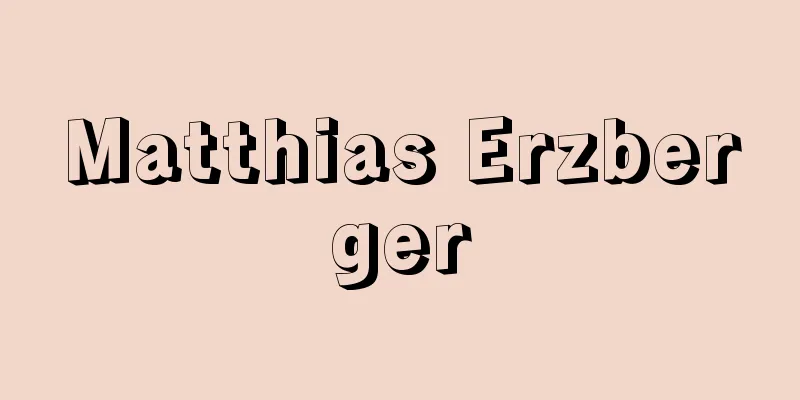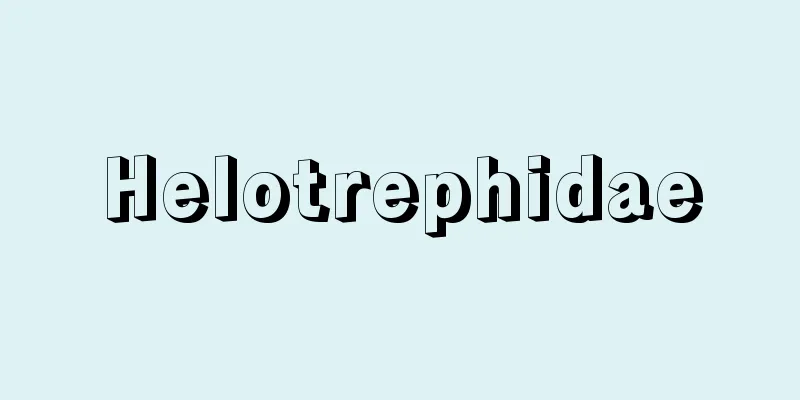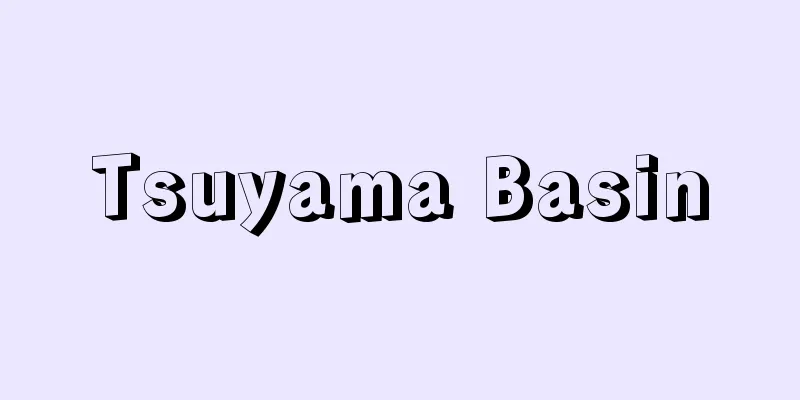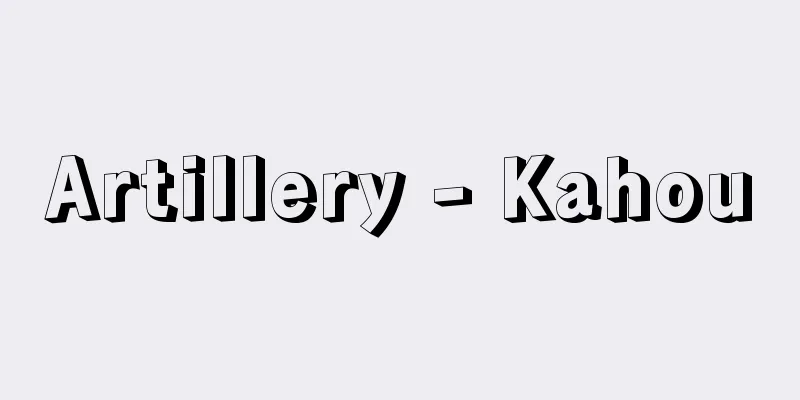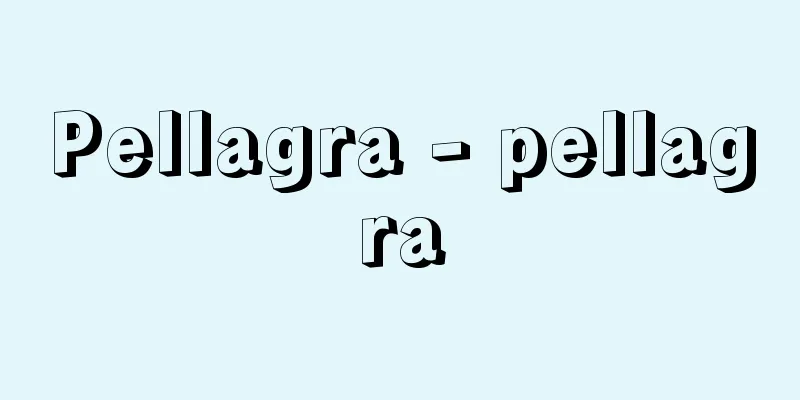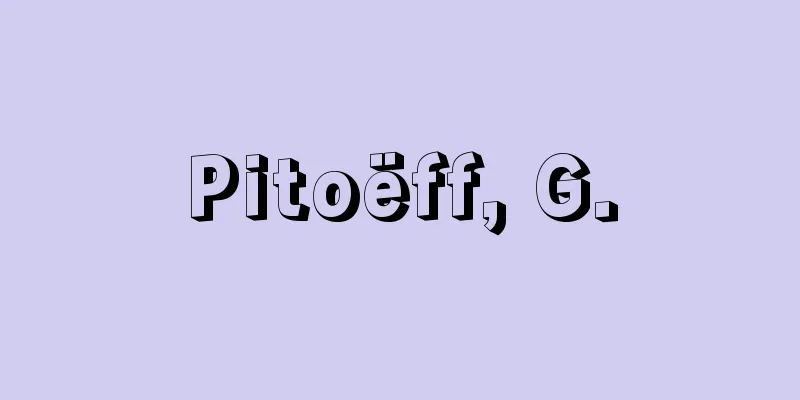Bookbinding - Seihon

|
It refers to the arrangement of printed or handwritten sheets, or other papers for record-keeping, into an orderly book according to their purpose, thereby (1) preventing the scattering of records, (2) making them easy to read, and (3) giving them preservation power. [Masayasu Sasaki] kindsIt can be classified from various angles as follows: [Masayasu Sasaki] Japanese and Western bookbindingThey each developed in different places of origin. (1) Japanese binding Originating from ancient China, the book styles developed in the following order: scroll binding, folded book, whirlwind leaf binding, butterfly binding (also called deccho), and enclosed binding. The techniques were introduced to Japan during the Nara period, and for a long period of time, until Western bookbinding techniques were imported in the early Meiji period, all books were bound in Japanese binding. However, they were gradually replaced by Western books, and today, to a limited extent, folded books, Yamato binding (a style developed uniquely in Japan during the Nara period), and enclosed binding (four-eyed binding) are used for Japanese books. (2) Western bookbinding Since papyrus and parchment were widely used as writing materials in Western Europe before Christ, the form of books has evolved from scrolls, to folded books, to die-cut binding, and finally to the bound form that is considered the origin of today's bookbinding. In particular, with the invention of papermaking and printing in the 14th century, bookbinding progressed rapidly, and bookbinding, in which the cover is bound to the inside with thread, was perfected. Then, in the late 19th century, book-casing, a mass-produced method of case binding, was developed and is still used today. All books today are bound in this style. [Masayasu Sasaki] Multi-material and multi-purpose binding(1) Quantum bookbinding: The field of binding a large number of books, magazines, notebooks, diaries, checkbooks, letter paper, slips, etc., simultaneously using the same materials and the same method. Today, this is what is generally referred to as bookbinding. (2) Morobihonbini: As the name suggests, this field involves the binding of a wide variety of books, even just a single copy. The work involved is wide-ranging, and includes the repair and reinforcement of old books, rebinding magazines, and renovating books. [Masayasu Sasaki] Publication and office supplies bindingPublication binding involves turning printed sheets of paper into books, magazines, etc., while office supplies binding involves turning blank sheets or sheets of paper with lines according to purpose into notebooks, diaries, receipts, etc. [Masayasu Sasaki] Permanent and temporary binding(1) Hardcover binding: This is a binding style in which the contents, with the fore-edges finished and cut on three sides, are wrapped in a separately made cover, with a "chiri" (the part of the cover that protrudes beyond the contents) between the cover and the contents. This is also called hardcover binding. (2) Temporary binding: After the contents are wrapped in a cover, the three edges are trimmed. Since the contents and cover are cut together, there is no dust between them. This is also called paperback binding. In addition to the above, if we classify them by the design of the cover and contents, we get . [Masayasu Sasaki] Bookbinding processBookbinding processes vary depending on the style, so here we will describe the manufacturing process for thick-bound round-back books. (1) Receiving printed copies When printed materials are delivered from the printing company, we receive them after checking as much as possible that they are the required quantity (including spare binding copies) and that there are no defective printed copies. (2) Partial Excluding: One sheet each from the printed materials received is extracted and folded, and the specified separate pages (frontispieces, inner covers, illustrations, etc. to be inserted into the main text) are inserted in the specified places to complete a single volume. This is then submitted to the client as soon as possible before starting the collating process so that they can check for any errors. (3) Alignment In order to accurately pre-cut the printed material to the specified size, two edges are aligned as standards: the side of the needle (a metal fitting that serves as a reference for determining the position of the side edges of the paper when inserting the paper) and the side of the gripper (the side that is gripped by the jaws of the printing press) when the material is put into the printing press. (4) Cutting: Cutting the printed book into separate pages, usually 16 pages front and back. (5) Folding The cut-and-cut printed book is folded so that the pages continue in order. A book that has 16 pages is called an eight-fold, an eight-page book is called a quarter-fold, and a four-page book is called a bi-fold. The main text that has been folded in this way is called a quire. (6) Preparation: Attaching endpapers to the front and back quires of a book, pasting in a title page and frontispiece, or pasting in a frontispiece or illustrations on designated pages within the main text. (7) Collating After folding and preparation, the quires are sorted into groups of the same quire in the order they will be collated (called "table sorting"). Next, while the quires are still stacked in roughly equal quantities, they are collected one fold at a time from the edge, arranged in the correct page order for a book, and then collected one by one to collate. During this process, accidents such as miscollating (where the quires are out of order and the pages are not in order) and missing pages (where a quire is missing due to a fold being missing) are likely to occur, so to prevent this, a collation stamp is printed on the spine of the quire to make it easier to spot them. (8) Binding: The spines of the signatures are bound together with sewing thread using a machine to make a book. (9) Smoothing and flattening When a book is bound into a single volume, the spine is thicker than the other flat parts due to the folds in the paper and overlapping binding threads, making the subsequent processes very difficult and preventing the book from being beautifully bound. Therefore, the spine is mechanically smoothed with strong pressure to make it the same thickness. Also, even if the same body paper is used, there will be slight differences in thickness when it is made into a single volume. In other words, uneven thickness within a single volume causes serious inconvenience in mechanical binding, so after smoothing out the book, it is pressed evenly and fastened to eliminate uneven thickness. (10) Temporary setting Also called "under setting." When cutting the three edges of a bound and leveled book, in order to cut the edges accurately and to the finished dimensions, a plastic or flexible adhesive is applied and dried so that each side is at a right angle based on the spine (where the binding thread is), and the book is temporarily set so that it does not easily deform when handled. (11) Trimming on three sides (finishing trimming) Trim the edges of all three sides except the spine to the finished dimensions. (12) Edge decoration: The edges of the cut pages are decorated with gold leaf, painted, colored strips, marbled, etc. The inside corners are rounded and the pages are hung with nails. This is the process where the edges are decorated with gold leaf, colored strips, marbled, etc. (13) Rounding the spine. This is to prevent the text from protruding beyond the front edge and becoming rounded in reverse, and also to make the book easier to open. This is also called backing. (14) Backing: Raised edges are made on both sides of the rounded spine of the book. This is called backing or backing, and serves as a joint with the thick cover. It increases the durability of the cover without putting undue pressure on the inside of the cover and makes it easier to open. (15) Spine Fixing After the backing is finished, cheesecloth and back paper (creased paper, ground paper) are applied in 2-3 layers with glue to the spine to harden it so that it will not lose its shape or break down in the future. Bookmarks and floral fabrics are also attached in this process. While the contents of the book are being completed through steps (1) through (15) above, the cover is being finished in a separate process as follows: (16) Cutting the cover material (18) Foiling A heated metal relief plate is used to press pigment or metal foil onto the spine and flat surface of the cover (foil stamping) to complete the cover. (19) Wrapping and gluing The order of the processes from this point onwards is completely different for hand binding and fully machine binding, so here we will explain the process for machine binding. When wrapping the contents in a cover, first adhesive is applied to the entire surface of the front and back endpapers of the contents, which will be attached to the cover, and then the cover is placed on top of it, mechanically adjusting any loose particles, to complete the wrapping and gluing process. (20) Fastening and grooving After wrapping, the book is firmly fastened on both sides so that the endpapers and cover are firmly attached, and a heated straight groove blade is used to firmly pinch the grooves of the cover along the edge of the spine from both sides to set the grooves. This ensures that the cover is firmly attached to the contents, and also makes it easier to open and close, improving preservation. At the same time, the book is shaped. (21) Inspection and Finishing After the finished products are inspected, sales cards, monthly reports and other cards are inserted, covers are put on or wrapped, and the required number of books are bound or wrapped to complete the entire process. [Masayasu Sasaki] History of BookbindingAlthough its origin is unclear, the history of the evolution of book forms can be considered the history of bookbinding. Rock, the first recording material, is solid and unchanging, but because transporting and carving into it requires a great deal of labor, various other methods of recording were explored. Among these are clay tablets from the Mesopotamian region, which are said to be the birth of modern books. Wedge-shaped characters were carved into them and then dried in the sun or baked in a kiln to become terracotta. These are called clay tablets, and in Japan they are known as tile-shaped writing. However, because they are fragile, they were further preserved by making double or triple outer boxes out of the same clay, and in ancient Egypt writing tablets were made by carving characters into lead slabs, and several of them were bound together with metal rings to prevent them from being scattered. Later, around 3000 BC, papyrus was widely used as a writing material, and especially when adhesives were invented, writing materials were preserved in scrolls, made by joining pieces of papyrus together and rolling them around a wood or ivory axis. Then, just before the birth of Christ, parchment appeared as a new writing material. It was used for a long time until the Middle Ages because of its smooth surface, which makes it suitable for writing, and its strength. It was also often used as a binding material for books, as it was particularly suitable for coloring. Meanwhile, in the 4th century, in Rome, a writing material called a codex was invented, in which the flat surface of a wooden board was carved into a shallow concave shape leaving a border around it, beeswax was poured into it, and characters were written on the surface with an iron stylus called a stilus, and the pieces were bound together with a metal ring or leather strap to form a writing material called a codex (wax tablet). Because parchment was very expensive at the time, these were used only for simple records. Some say that these wax tablets are the original form of books. In the 5th century, scroll-style books were difficult to read and handle, leading to the invention of a new bound style. This style is the original form of today's saddle-stitched books, in which four square pieces of parchment were stacked and folded in half, then stitched along the fold to make eight leaves at the fore-edge, and is considered the original form of today's books. This style was further improved and refined, with more sheets bound together or wooden covers stapled to the front and back. The technique of binding the covers also developed further, leading to the Renaissance bindings of the 6th century, which were studded with gold, silver, and precious stones. This was followed by ivory bindings from the 12th century and foil-stamped bindings from the 13th century, both of which are famous and remain today as medieval manuscripts. Paper was invented in China, and the techniques for making it were introduced to the West around the 9th century, and by the 15th century, mechanized papermaking had finally been developed. The core material of the cover changed to pieces of paper pasted together or made from thick paper, and full-scale leather binding, in which leather was pasted on the cover and then embossed with gold leaf, became popular in Western Europe, and the famous Grolier binding also appeared. In addition, movable type printing was invented in Europe in the mid-15th century, and books began to be produced in large quantities. As a result, the production of books, which had previously been carried out only by monks, was transferred to the hands of newly born professional bookbinders, and the royal families of each country also employed their own bookbinders, and bookbinding techniques advanced, producing a great number of excellent works. Embroidered bindings in England from the 16th century and Islamic bindings in India and Persia are particularly famous. Fore-edge decoration began in the days before the development of foil stamping technology, when the title of a book was written on the front edge of the book opposite the spine. Later, around the 14th century, it became common to write the owner's family crest on the book, and by the 16th century, the techniques of gold leaf decoration, marble decoration, and embossing that we see today had been invented. Thus, from the 15th and 16th centuries onwards, there had been remarkable progress in the materials used and binding techniques, but no notable developments had been made in bookbinding technology. The binding method is to bind the writing material (printed matter) with hemp thread to a core with a five-strand binding cord, then bind the core material of the front and back covers with both ends of the binding cord, and then cover the whole surface with leather to create the cover. At this time, leather is attached to the spine over the binding cord, which makes that part rise up and creates a five-strand band. This method is called binding because the cover is bound to the contents. In the 19th century, not only did printing and papermaking techniques improve dramatically, but the demand for books also increased dramatically. The invention of bookbinding cloth, which replaced leather as a binding material, strongly stimulated the development of mass-production methods for bookbinding, and eventually the handmade case binding method for mass-production that is widely used today was perfected. After World War II, Europe and the United States succeeded in developing fully automated bookbinding using this case binding method. Today, books are produced using this machine in developed countries around the world. Japan has added its own original ingenuity to these methods, and is one of the world's leading countries in bookbinding technology in terms of the quality of its products. [Masayasu Sasaki] "Bookbinding Digest" by Tsuneo Maki (1964, Printing Society of Japan Publishing Division)" ▽ "Publishing Editing Techniques, Volumes 1 and 2, by Yoshitsugu Fujimori (1978, 1980, Japan Editor School Publishing Division)" ▽ "Moroccan Leather Books" by Kumiko Tochiori (Shueisha Bunko) [References] | |©Katsuya Nishikawa "> Names of the various parts of a Japanese book (four-leg binding) ©Katsuya Nishikawa "> Names of parts of Western binding ©Katsuya Nishikawa "> Main types of Japanese books ©Katsuya Nishikawa "> Main types of Western-style bookbinding ©Shogakukan "> Classification of Western-style bookbinding by cover style [Table] ©Shogakukan "> Binding type ©Shogakukan "> Thread binding and perfect binding ©Katsuya Nishikawa "> Three styles of seigatame ©Shogakukan "> Manufacturing process for thick-cover round-back books Source: Shogakukan Encyclopedia Nipponica About Encyclopedia Nipponica Information | Legend |
|
印刷や手書きされた紙葉、または記録を目的とする用紙類を、その目的に応じて順序正しく図書の形にすることをいい、それによって〔1〕記録の散逸を防ぎ、〔2〕繙読(はんどく)に便にして、〔3〕保存力を付与することである。 [佐々木正康] 種類次のようにいろいろの角度から分類される。 [佐々木正康] 和製本と洋製本発祥の地を異にしてそれぞれ発達したものである。 (1)和製本 古く中国に起源を発し、図書の形態も巻子本(かんすぼん)、折本(おりほん)、旋風葉(せんぷうよう)、胡蝶(こちょう)(粘葉(でっちょう)ともいう)装、袋綴(ふくろと)じの順で発達した。わが国でも奈良時代にその技術が移入され、その後、明治初期に洋製本の技術が輸入されるまでの長期間、すべての図書は和製本で仕立てられてきたが、逐次洋本にとってかわられ、今日では限られた範囲で折本、大和綴(やまとと)じ(奈良時代にわが国で独自に開発した形態)、袋綴じ(四ツ目綴じ)の形態が和本として用いられている。 (2)洋製本 西欧において紀元前にパピルスやパーチメント(羊皮紙)が書写材として広く用いられて以来、図書の形態も巻子本、折本、打抜き綴じ、さらに、今日の製本術の原点と考えられる綴本形式へと発達した。とくに14世紀の製紙術、印刷術の発明により急速に進歩し、表紙を中身の綴じ糸で綴じ付けた綴じ付け製本book-bindingが完成した。ついで19世紀の後期より、大量生産方式のくるみ製本book-casingが開発され今日に至っている。現在の図書はことごとくこの様式で製本がなされている。 [佐々木正康] 数物製本と諸製本(1)数物(かずもの)製本 大量の書籍、雑誌、ノート、手帳、小切手帳、便箋(びんせん)、伝票など同一材料を用い、同一方法で同時に製本する分野。今日、一般に製本といえばこれをさすことが多い。 (2)諸(もろ)製本 文字どおり、もろもろの図書を1冊でも製本加工する分野で、その作業内容は幅広く、古書の修復補強や再製本、雑誌の合本、図書の改装などを行う。 [佐々木正康] 出版物製本と事務用品製本印刷された紙葉を書籍、雑誌などにつくりあげるのが出版物製本であり、白紙や用途に応じた罫(けい)を引いた紙葉をノート、手帳、伝票などに仕上げるのが事務用品製本である。 [佐々木正康] 本製本と仮製本(1)本製本 小口三方を仕上げ断裁した中身を、別に仕立てた表紙でくるんで、表紙と中身の間に「ちり」(中身より出張った表紙の部分)がある製本様式で、上製本ともよぶ。 (2)仮製本 中身を表紙でくるんだのち、三方小口を仕上げ断裁するもので、中身と表紙がいっしょに裁(た)たれるためにその間にちりがない製本様式で、並製本とも称する。 以上のほかに、表紙や中身の仕立て方で分類するとのようになる。 [佐々木正康] 製本工程製本は様式によって工程は一様でないので、ここでは厚表紙丸背本の製造工程について述べる。 (1)刷本の受け取り 印刷所より搬入された刷物は、必要数量(製本予備を含んで)や不良印刷物の有無をできる限り確かめて受け取る。 (2)一部抜き 受け取った印刷物を各1枚ずつ抜き出して折り、指定の別丁(べっちょう)類(本文中に差し込まれる口絵、中扉、図版類など)を指定の箇所に挿入し、完全な1冊の順序にしたものを、丁合(ちょうあ)い作業に着手する以前にできる限り早い時点で得意先に提出して、間違いがないか確認してもらう。 (3)突きそろえ 印刷物を所定の大きさに正確に仮裁するため、印刷機にかけたときの針(紙差しの際、紙の横縁の位置を決めるための基準となる金具)の側(がわ)とくわえ(印刷機のくわえづめがくわえるほう)の側の二辺を基準としてそろえる。 (4)裁ち割り そろえた刷本を普通、表裏で16ページになるように切り離す。 (5)折り 裁ち割った刷本をページが順につながるように折る。折り上げて16ページになるものを八つ折、8ページのものを四つ折、4ページを二つ折とよび、このように折り上げられた本文を折丁(おりちょう)という。 (6)下ごしらえ 1冊分の前後折丁に見返しを取り付けたり、扉、口絵を貼(は)り込み、あるいは本文中に中扉や挿絵を指定のページに貼り込む。 (7)丁合い 折りや下ごしらえの終わった折丁を、丁合いする順序に同じ折丁ごとに区分けする(台分けという)。ついで各折丁をほぼ同じ数量ずつ重ねたまま、端から順に1折ずつ集めて正しい1冊分のページの順になるように並べて、それを1枚ずつ集めて丁合いをとる。この際、乱丁(折丁の順が狂ってページの順が続かないもの)、落丁(折丁が1折分脱落して不足のもの)等の事故が発生しやすいので、それを防止する目印に、折丁の背に丁合い用段印が印刷されていて、それらの発見を容易にできるようにしてある。 (8)綴じ 機械を用いて、折丁の背をカタン糸で綴じ合わせて1冊とする。 (9)均(なら)しと平締め 1冊に綴じ上げられたものは、その背部が、ほかの平(ひら)の部分よりも紙の折り目、綴じ糸の重なりとで厚くなり、以後の工程を非常にむずかしくし、美しい形に製本できない。そこで、その背の部分を同じ厚さにすべく機械的に強圧を加えて均す。また、同一の本文紙のものでも1冊分になると多少ではあるが厚さの異なるものができる。すなわち1冊分の厚さのでこぼこは機械製本では甚だしく不都合を生じるので、均し終わったものをさらに平らに加圧して締めて、厚さの不ぞろいをなくすようにする。 (10)仮固め 下固めともいう。綴じ上げ均されたものの小口を三方裁ちするに際し、正確に、切り口も美しく仕上がり寸法に裁つために、その背部(綴じ糸のある)を基準として各面が直角になるよう正確に可塑性あるいは柔軟質の接着剤を塗布乾燥し、取扱い上容易に変形しないよう、かりに固める。 (11)三方断裁(化粧裁ち) 背以外の三方小口を仕上がり寸法に裁ち上げる。 (12)小口装飾 仕上げ断裁された小口に天金(てんきん)、三方金(さんぼうきん)、色塗り、色パラ掛け、マーブルなどの飾りを施し、また中身の角丸(かどまる)、爪掛(つめか)けもこの工程で加工する。 (13)丸み出し 背に丸みをつける。本文が前小口にせり出して逆丸みになるのを防ぎ、また本の開きをよくするためである。バッケ出しともいう。 (14)バッキング 丸みの出された中身の背に沿って表裏両側に耳出し(隆起部をつくる)を行う。これをバッキングbackingあるいは山たたきと称し、厚表紙との接合部となるとともに、見返しののどに無理な力をかけることなく耐久力を増加し、表紙の開きをよくする。 (15)背固め バッキングの終わった背に接着剤を用いて、寒冷紗(かんれいしゃ)、背貼紙(しわ紙、地券(ちけん)紙)を2~3層に重ね貼りして、書籍としてのちのち形が崩れたり壊れたりしないように固める。なお、しおりや花布(はなぎれ)はこの工程で取り付け加工される。 以上(1)~(15)までの工程で書籍の中身ができあがるのと並行して、次のような別工程で表紙が仕上げられる。 (16)表紙材料の裁ち込み (18)箔(はく)押し 表紙の背や平(ひら)の表面に加熱した金属凸版を用いて、顔料色箔や金属箔を押圧し(箔押し)表紙ができあがる。 (19)くるみ、糊(のり)入れ 以降の工程は手製本と完全機械製本ではその順がまったく異なるので、ここでは機械製本の場合について説明することにする。 表紙で中身をくるむにあたっては、まず中身の前後見返しの、表紙に貼着(てんちゃく)される面に接着剤を全面塗布し、それに機械的にちりを調整しながら表紙をくるむように着せて、くるみと糊入れを終わる。 (20)締めと溝入れ くるみ終わったものは見返しと表紙がしっかり貼り付くように両面から強く締めるとともに、加熱した直線の溝用の刃を用いて背の耳に沿って表紙の溝部を両側より強く挟んで溝入れを行う。こうすることで表紙は中身にしっかりと取り付けられ、かつ表紙の開閉がよくなり保存力が高められる。同時に成型をする。 (21)検品と仕上げ できあがったものは検品を行ったうえで、売上げカード、月報やカードを挿入し、カバーをかけたり、くるみ入れを行ったのち、所定冊数を結束あるいは包装して全作業を終わる。 [佐々木正康] 製本の歴史起源は明らかでないが、図書の形態の変遷の歴史を、そのまま製本の歴史と考えることができる。すなわち、最初の記録材料であった岩石は堅牢(けんろう)不変であるが、運搬や彫刻に多大な労力を必要とすることから、他の記録法がいろいろと探求された。それらのうちには、今日の書物の誕生といわれるメソポタミア地方の粘土板がある。それに楔(くさび)形の文字を刻み天日で乾かすか、窯で焼き固めてテラコッタとした。これをクレー・タブレットclay tabletとよび、わが国では瓦書(かわらしょ)として有名である。しかし壊れやすいため、さらに同じ粘土で二重、三重に外箱をつくって保存力を付与し、また古代エジプトでは鉛の平板に文字を彫刻して書板(かきはん)とし、何枚かを金属の輪で綴じて散逸を防いだ。 その後、紀元前3000年ごろに書写材としてパピルスが広く用いられ、とくに接着剤が発明された時代には、書写材の保存の形態はパピルスを継ぎ合わせ、木や象牙(ぞうげ)を軸にして巻いた巻子体となった。ついで紀元直前のころ、新たにパーチメント(羊皮紙)が書写材として登場した。これはその表面の平滑な筆記適正と強靭(きょうじん)さによって長く中世まで使用され、とくに彩色に適しているため表紙の装丁材としても多く用いられた。その間、4世紀に至り、ローマでは、木板の平面を周囲に縁を残して浅く凹形に彫り、そこに蜜蝋(みつろう)を流し込んでその表面に、スティルスstilusと称する鉄製の尖筆(せんぴつ)で文字を書き、それらを金輪や革紐(かわひも)で綴じ合わせてコデックス(蝋板(ろうばん))とよばれる筆写材料を考案した。当時パーチメントは非常に高価であったため、これは簡単な記録用にもっぱら使用された。この蝋板こそ図書の原形であるとする説もある。 5世紀に入ると、巻子体形式のものは読みにくく、取扱いの不便さから、新たに綴本形式のものが考案されるに至った。この形式は、方形に切られたパーチメントを4枚重ねて、真ん中で二つに折り、その折り目を綴じて小口で8葉とした今日の中綴(なかとじ)本形式であって、まさしく今日の図書の原形とみなされるものである。この形式はさらに改良工夫されて、枚数を多く綴じ、あるいは前後に木板の表紙を綴じ付ける様式がとられ、さらに進んで表紙に装丁を施す技術も発達し、金銀、宝石などをちりばめた6世紀のルネサンス装を生んだ。続いて12世紀代の象牙細工装、13世紀の箔押し装などは有名で、その作品は中世の書写本として今日も残っている。 中国で発明された紙は、その技法が9世紀ごろより西方に伝達され、15世紀に至ってついに製紙の機械化が開発された。表紙の芯材は紙を貼り合わせるか、厚く漉(す)いたものにかわるとともに、皮革を装丁材として貼り上げた表紙に箔押し加工した本格的な革装本の製本が西欧に広く流行し、有名なグロリエ式装丁も現れた。また、15世紀の中ごろヨーロッパで活版印刷術が発明され、書物が大量に普及するようになった。それに伴って、それまで僧侶(そうりょ)によってのみ行われていた図書の製作は、新たに生まれた専門の製本師の手に移り、各国王室も御用製本師を抱えるなどして、製本技術も進歩し、数多くの優秀な作品がつくられた。とくに16世紀のイギリスの刺しゅう装丁やインド、ペルシアのイスラム装丁は有名である。 小口装飾は、箔押しの技術が開発される以前の時代に図書の書名を背と反対の前小口に書き込むことで始まった。後の14世紀ころには持ち主の家紋を書き込むことが広く行われ、16世紀に至り、今日のような、天金、三方金、マーブル、浮出しの技法が考案された。このように15~16世紀以降は製作資材や装丁技法の点では著しく進歩したが、製本技術の点ではなんらめぼしい発展をみなかった。 その製本方法は、普通5条の綴緒の芯に書写材(印刷物)を麻糸で綴じ付け、さらにその綴緒の両末端で表裏の表紙の芯材を綴じ込み、その上から全面を革で覆って表紙をつくるのである。このとき、背の部分で革が綴緒の上から貼り付けられるため、その部分が一段と盛り上がり、5条のバンド(綴帯)ができる。この方法は表紙が中身に綴じ付けられているので綴じ付け製本とよぶ。 19世紀に至り、印刷術、製紙術の著しい向上と、図書の急激な需要の増加に加えて、表紙装丁材の皮革にかわる製本用クロースの発明が製本の量産方式の開発を強く刺激し、ついに今日広く行われている量産製本手工方式のくるみ製本が完成され、さらに第二次世界大戦後欧米では、このくるみ製本方式による完全自動製本の開発に成功した。今日世界の先進国においては、この機械で図書が製作されている。わが国は、これらに独自の創意工夫を加え、その製品のよさでは世界有数の製本技術国となっている。 [佐々木正康] 『牧経雄著『製本ダイジェスト』(1964・印刷学会出版部)』▽『藤森善貢著『出版編集技術』上下(1978、80・日本エディタースクール出版部)』▽『栃折久美子著『モロッコ革の本』(集英社文庫)』 [参照項目] | |©西川勝也"> 和製本の各部名称(四ツ目綴じ) ©西川勝也"> 洋製本の各部名称 ©西川勝也"> 和製本のおもな種類 ©西川勝也"> 洋製本のおもな種類 ©Shogakukan"> 洋製本の表紙仕立てによる分類〔表〕 ©Shogakukan"> 綴じの種類 ©Shogakukan"> 糸綴じと無線綴じ ©西川勝也"> 背固めの3様式 ©Shogakukan"> 厚表紙丸背本の製造工程 出典 小学館 日本大百科全書(ニッポニカ)日本大百科全書(ニッポニカ)について 情報 | 凡例 |
>>: Life Insurance Workers Union - Seihororen
Recommend
Shigemitsu Mamoru
Diplomat and politician. Born in Oita Prefecture....
Trumpet honeysuckle
...It is also called honeysuckle wine because of ...
Charles V
…After his Symphony (1928), Webern turned to a po...
Omineokukake - Omineokukake
...One of the peaks of the Omine Mountains, with ...
Society of United Irishmen
…Irish nationalist organization. Its official nam...
Nariwa River
Dogoyama (1,269m) on the border between Hiroshima ...
Umikongo (Japan) - Umikongo
...The cruise ship that connects to Kushimoto, 2k...
genièvre (English spelling) genievre
...The former was created by Sylvius of Leiden Un...
Carex limosa (English spelling)
…[Tetsuo Koyama]. … *Some of the terminology that...
Applied mathematics
The term "applied mathematics" evokes a...
Checker, C. (English spelling) CheckerC
...Dance music that became very popular in the Un...
Ascarite
...It is a strong base whose granules do not easi...
Inflammatory polyp (English spelling)
…Treatment is the same as for adenomas, with poly...
External effects
...The phenomenon known as pollution is a typical...
Labor and Farmer Relief Association
An organization whose purpose is to provide relief...
